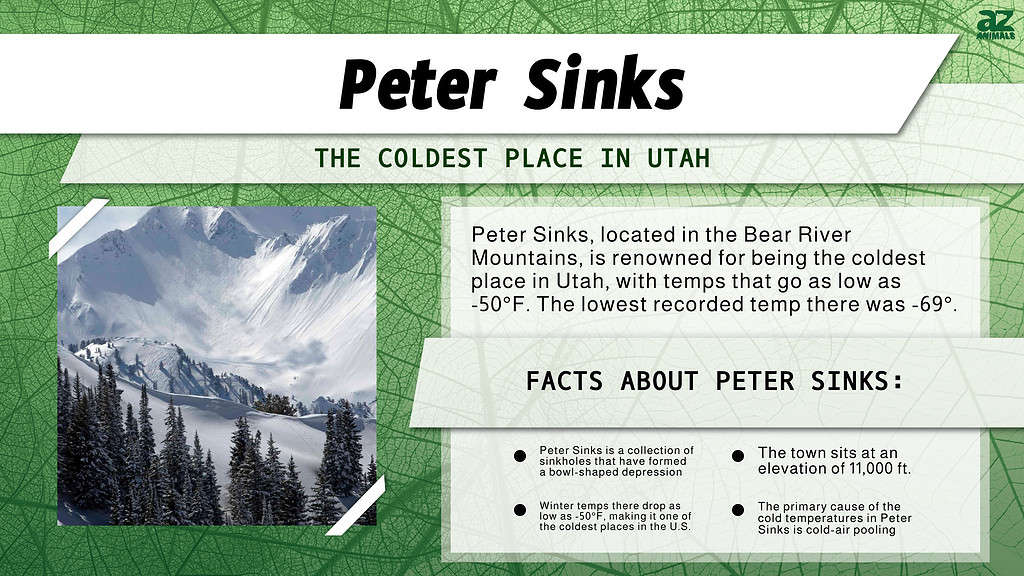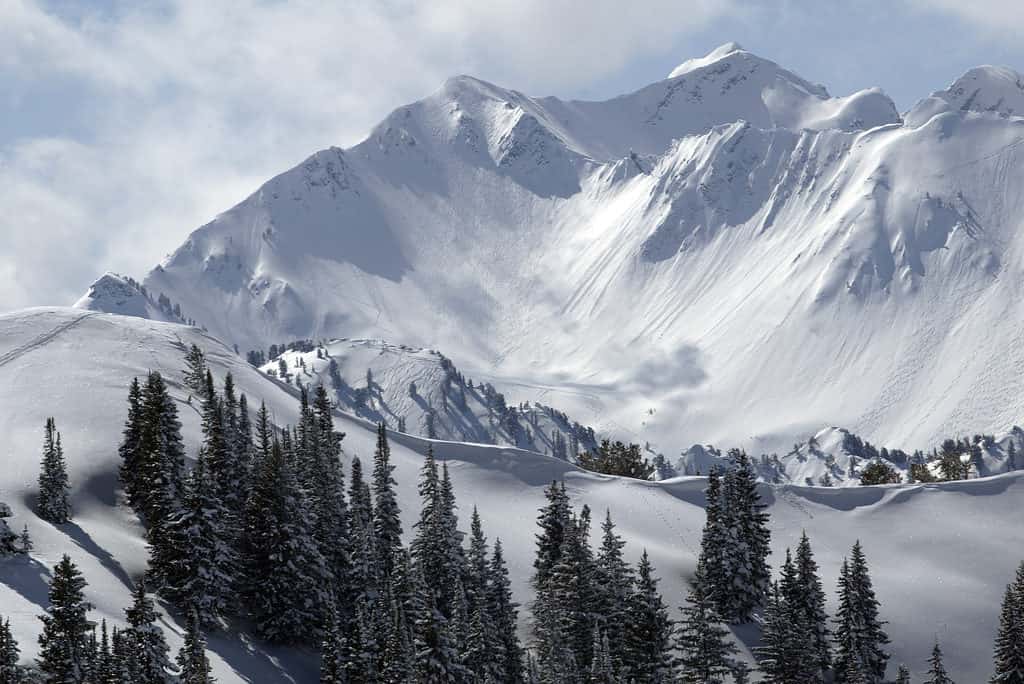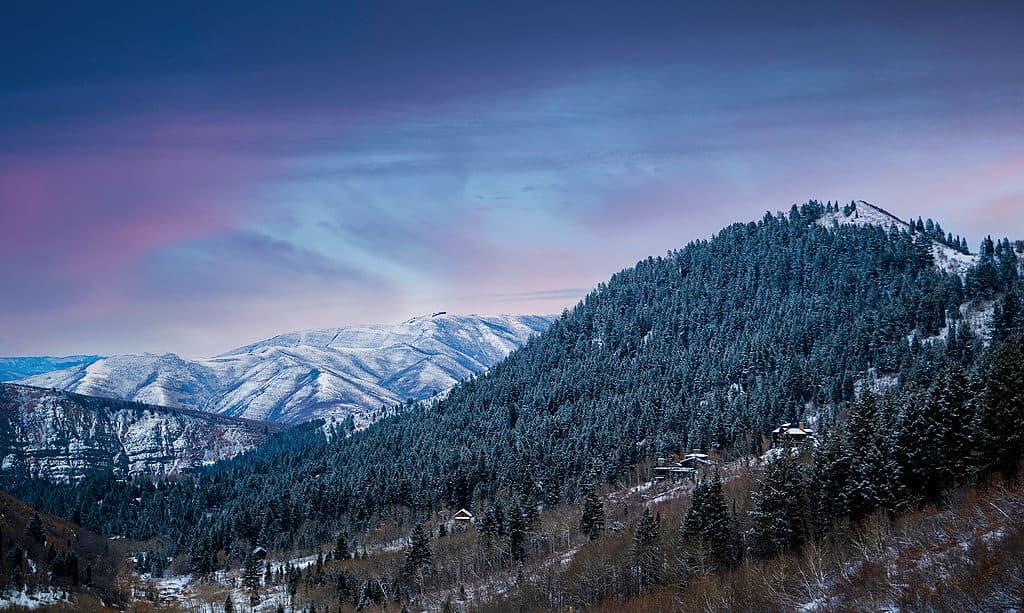Utah is known for its wide range of climates and landscapes, from the arid deserts of the south to the snowy peaks of the north. But even within this diverse state, some places are truly frigid! Today, we will look at some of these places and learn which one is the “King of the Cold.” Additionally, we’ll learn about some of the unique interactions the cold has on the local wildlife. Let’s discover the coldest place in Utah!
What Is the Coldest Place in Utah?

Peter Sinks is known for its frigid temperatures and heavy snowfall. The elevation of 8,164 feet, combined with its location in a high mountain valley, makes it susceptible to cold weather. In fact, the region’s lowest recorded temperature is an astounding -69 degrees Fahrenheit! This extreme record was set on February 1, 1985.
Peter Sinks, located in the Bear River Mountains, is renowned for being the coldest place in the entire state. During winter, temperatures drop as low as -50°F, making it one of the coldest places in the entire U.S. With an elevation of 11,000 ft., the area is named for Peter Sinks, a natural depression in the rock formation. This formation collects water from the surrounding mountains and drains it down into the valley below. Because Peter Sinks is so high up in the mountains, it’s exposed to cold air, resulting in extremely cold temperatures.
The coldest temperature ever recorded in the contiguous U.S. was in a mountain pass in West Yellowstone. This town is almost directly north of Peter Sinks. At -70 degrees Fahrenheit, the Yellowstone record was one degree from the current record in Utah of -69 degrees Fahrenheit.
What Makes Peter Sinks So Cold?

During winter, temperatures drop as low as -50°F, making Peter Sinks one of the coldest places in the entire U.S.
©yoshimedia/Shutterstock.com
Located nearly 500 miles south of Canada, Peter Sinks is an unusually cold place due to its high elevation, dry air, and topography. Peter Sinks is a collection of sinkholes that have formed a bowl-shaped depression. It is surrounded by ridges hundreds of feet higher than the lowest point. This feature creates its own microclimate, as the dense freezing air pools in the depression and is unable to escape. This phenomenon is known as cold-air pooling and is the primary cause of the unusually cold temperatures in Peter Sinks.
How Much Snow Does Utah Get Each Year?

Salt Lake City, the largest city in the state, is a winter wonderland with an average of 50 inches of snowfall each year.
©NickSpinder/Shutterstock.com
Utah is a mix of deserts and mountains, making it one of the most beautifully rugged places in the country. People from all over the world come to hike and ski on the renowned slopes. Snow sports are important both culturally and economically for the region.
Salt Lake City, the largest city in the state, is a winter wonderland with an average of 50 inches of snowfall each year. This consistent snowfall is vital for snow sports and tourism in the area. Ski resorts, snowmobile trails, and cross-country skiing are all popular recreational activities. The snowfall is what keeps these activities running throughout the winter season. Salt Lake City experiences an average winter temperature of 32°F. During the winter months, temperatures often dip below 0 degrees but rarely stay there for more than a few days.
Wildlife in the Cold Mountains of Utah

Large animals like
bighorn sheep
are common in the cold mountains of Utah.
©Trace Hudson/Shutterstock.com
Utah’s cold mountain ranges are home to a variety of animals that have adapted to the harsh winters. Many of these animals migrate south during the winter months to more hospitable climates. However, some remain in the mountains all year round. Large animals, such as elk, moose, bighorn sheep, and deer, are commonly found in the cold Utah mountains. These species have adapted to the cold temperatures by growing thick fur coats. Additionally, they store extra fat to help them survive the winter months. Many bird species also make the cold mountains of Utah their home. Grouse, owls, and woodpeckers can be found during winter, while other birds, such as hummingbirds, migrate south.
Additionally, the region is home to various cold-resistant plants that can withstand harsh winter temperatures. The alpine aster is a perennial plant with bright blue flowers found in high-elevation areas. Fireweed is a fast-growing perennial with pink and purple flowers and is often found in alpine regions. Harebell is a small, delicate flower with bell-shaped blue petals commonly seen in alpine meadows and rocky slopes. All three of these plants can withstand the cold temperatures of Utah’s winter.
Up Next:
- Discover the Coldest Place in Tennessee
- Discover the Coldest Point of the Mississippi River
- What Is the Coldest Place on Earth, and Can You Survive?
- What’s the Coldest Temperature Reindeer Can Live In?
The photo featured at the top of this post is © iStock.com/ablokhin
Thank you for reading! Have some feedback for us? Contact the AZ Animals editorial team.






